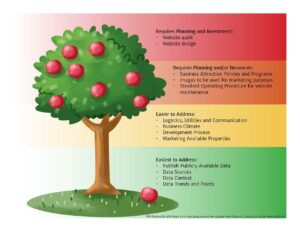
When a project requires public incentives, there are several important elements to look for to ensure the public is going to be getting a good deal. First, cash flow is king. Regardless of the potential for the project’s intrinsic values, at the end of the day, a project is unlikely to move forward if the project doesn’t make money. This makes sense from the business perspective, however, there are other factors that play into signifying a strong project. When securing financing, a bank or lending institution will look at several factors. Those that have a familiarity with commercial underwriting will recognize these as the “5 C’s of Credit”.
The Five C’s of Credit
- Capacity – Another term for Cash Flow. This is the loan applicant’s debt service to income ratio. This is the arguably the most important of the five factors. This can include the specific project, and/or personal income of owners/investors if personal guarantees included as collateral (see #4).
- Capital – The stronger the balance sheet of the business or individual seeking funding, the higher the score for this factor. This also includes the amount of cash put into a project directly from the investor/developer. A developer or business owner should have some skin in the game (at least 10% owner equity). If not, be wary.
- Character – Traditionally, this represents a potential borrower’s credit score. More importantly, it is the borrower’s historical relationship with the lending institution and their reputation within the community. If a borrower has developed a trusted relationship with the lender, the they will score in this factor.
- Collateral – These are the assets pledged to secure a loan. Lending institutions require loans to be within a set Loan-to-Value (LTV) ratio per their internal and external regulations. In order to achieve the required LTV, lenders may require borrowers assign personally guarantees to further secure a loan.
- Conditions – Potentially viewed as a catch-all category, Conditions include a wide range of criteria. Primarily, conditions include uses of funds, industry trends, the nature of the current economy, and reliance on outside factors for success. Additionally, conditions include loan terms (interest rate, amortization).
When a project needs public support for a project, the economic development practitioner owes it to the community to conduct a thorough review of the project financials using the above items as a guide. If the numbers do not pencil out, the deal will not work for the business, the developer, or the community.
Final Project Thoughts
One thing to keep in mind is that a developer will make their decisions based on the rate of return they expect to receive. If the developer is getting an internal rate of return (IRR) investing elsewhere (stock market, etc.) then they won’t move forward with the project. A healthy balance is needed to ensure public support and maintain an attractiveness to developers.





